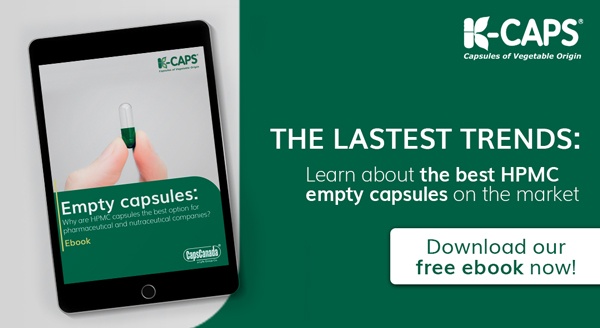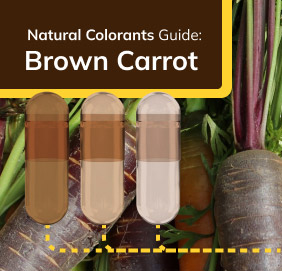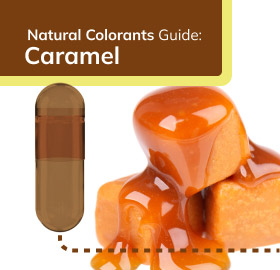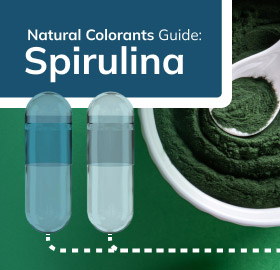It’s time for a pop quiz:
- Question #1: Which is better, to deliver your vitamin or supplement product as one large capsule or two smaller capsules?
- Question #2: Is there a certain capsule size that is best for essential oils versus for herbs, or for vitamins versus for other dietary supplements?
- Question #3: Are the answers to questions 1 and 2 different for HPMC capsules versus gelatin capsules?
If your answers were “it depends,” “no” and “no,” then congratulations! You get a gold star.
Capsules come in standardized capsule sizes
As the following size chart for K-CAPS® vegetarian capsules shows, HPMC capsules come in a range of sizes.

These capsule sizes are standardized throughout the industry for all capsule types. In other words, a size 2 HPMC capsule from one capsule manufacturer is the same size as a size 2 gelatin capsule from another capsule manufacturer.
In this standardized numbering system, capsule size numbers are inversely related to size of the capsule. This means that a size 4 capsule is significantly smaller than a size 0 capsule, with size 00E being the largest capsule on this chart.
In the vitamin industry as well as the nutritional supplements industry as a whole, the most commonly used sizes are 00, 0, 1 and 2. Size 0 is seen as being particularly versatile because it’s both big enough to hold a range of mixes and small enough for most people to comfortably swallow.
What size capsule is needed to hold your formulation?
Capsule capacity is a function of both volume and mass (i.e. weight). It’s not just a matter of how much powder or liquid can physically fit into the capsule. The weight of that fill material is also important. Weight, in turn, depends on density, which varies widely based on the fill material’s specific properties.
To calculate how big a capsule is needed to hold your formulation you need to know two things: The formulation density and the total mass (weight) of the product you want to encapsulate.
For this reason, your starting question always needs to be, “How many milligrams of formulation is in each recommended dose?” The answer to this question gives you the mass.
Density is calculated using the following formula:
Density = Mass (g) /Volume (ml)
The mass is based on the dosage, while the volume is based on how much space this dosage takes up in a measuring spoon.

Here’s what you do. First, find the line for the formulation density that is closed to the density of your formulation. Then look for the capsule size that is closest to—but not smaller than—your formulation’s weight. This will tell you the size of the capsule that will accommodate your formulation. For example, if your formulation’s density is 0.8 g/ml and its weight is 295 mg you’ll need a size 1 capsule. The size 2, which holds 288 mg at that density, would be too small.
Alternatively, you can take advantage of K-CAPS’ handy size calculator.
What factors should you consider when choosing an HPMC capsule size?
Determining the minimum size capsule needed to hold your formulation is just the starting point. After that, whether you’re encapsulating liquids or powders, you should also consider the following when selecting an HPMC capsule size for your product …
Swallowability – Once you know how big a capsule is needed you must consider if a capsule of this size would be difficult for the intended consumer to ingest. If the capsule size is likely to be difficult to swallow, it may be best to spread the dose over multiple smaller pills.
For example, most adults can easily swallow a size 0 capsule. Children and the elderly, however, often struggle to swallow a capsule this large.
Keep learning about capsule technology trends...
- Gelatin capsules vs. HPMC capsules: What are the differences?
- Why Liquid-Filled Hard Capsules May Be a Better Option than Softgels
- Flavored capsules: the next customization level
Appearance – Sometimes there are reasons why you want to go to market with a larger capsule size than what your formulation calls for. In this case, you can use a colored capsule to hide the contents, so that consumers won’t think that they are not getting a full dose because their capsule is not completely full. Other times you may feel that smaller capsules will provide enhanced visual appeal. In this situation you may need to split your dose into two capsules.
Compliance – For greatest compliance you will generally want to market your supplement in the smallest capsule size possible with the fewest number of capsules per serving. To make this happen you may need to look closely at the formulation’s inactive ingredients. Can you reduce the volume of “filler” without compromising how well the product will run on your filling machines?
Conclusion
While these guidelines will help you determine which HPMC capsule size is best for encapsulating your nutritional supplement, if you need help with the analysis, the experts at CapsCanada are always here for you. You can contact our experts here.















